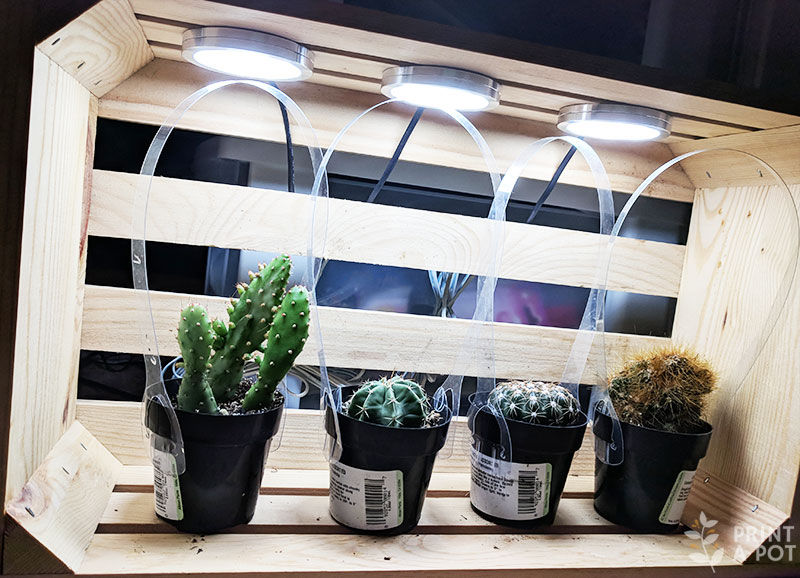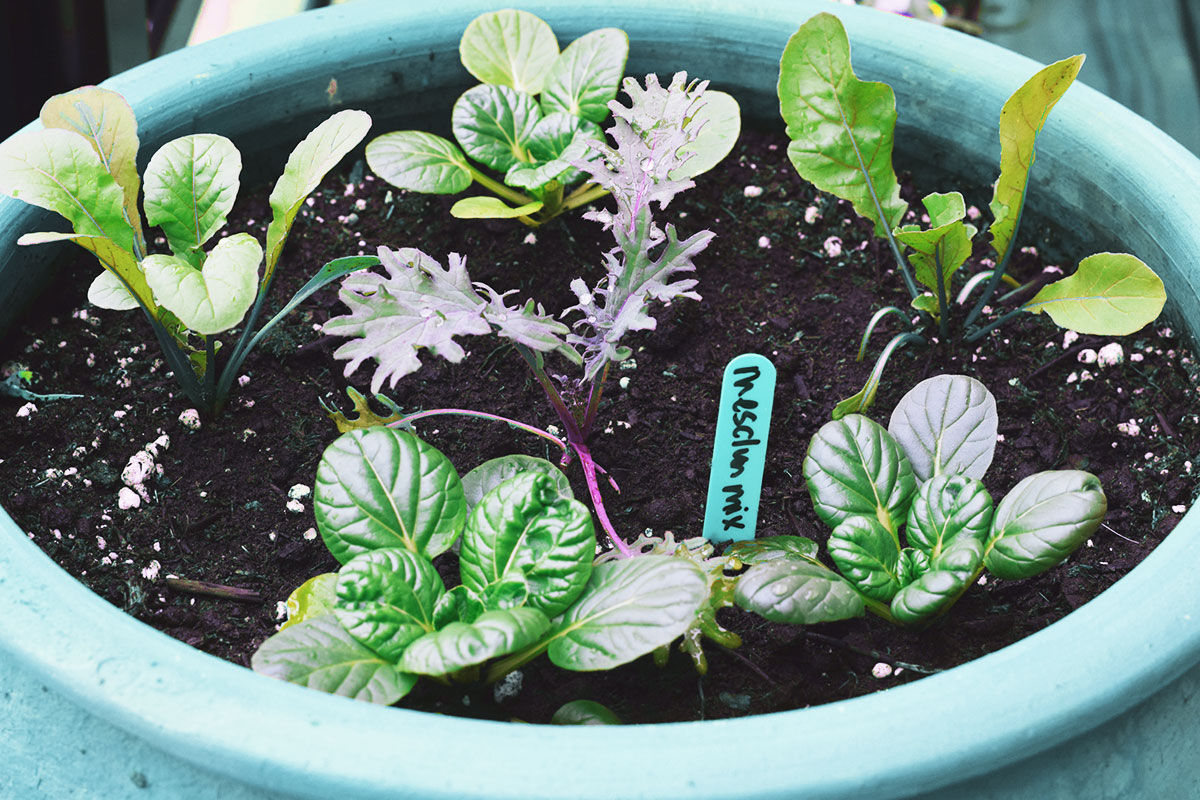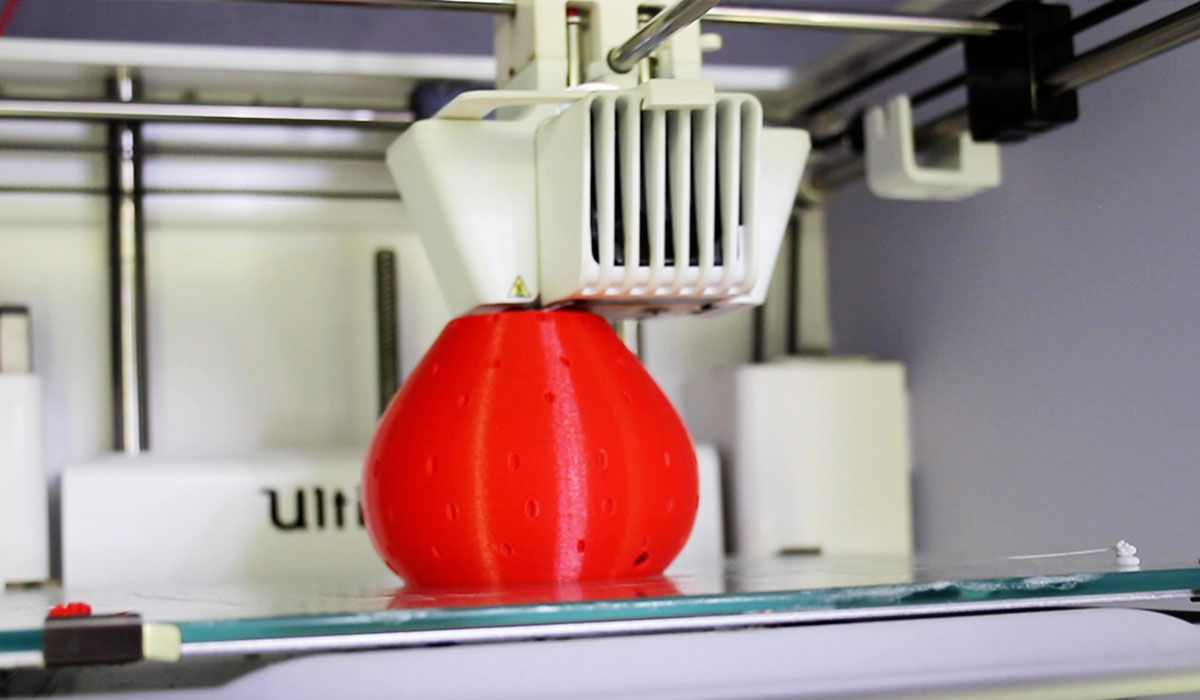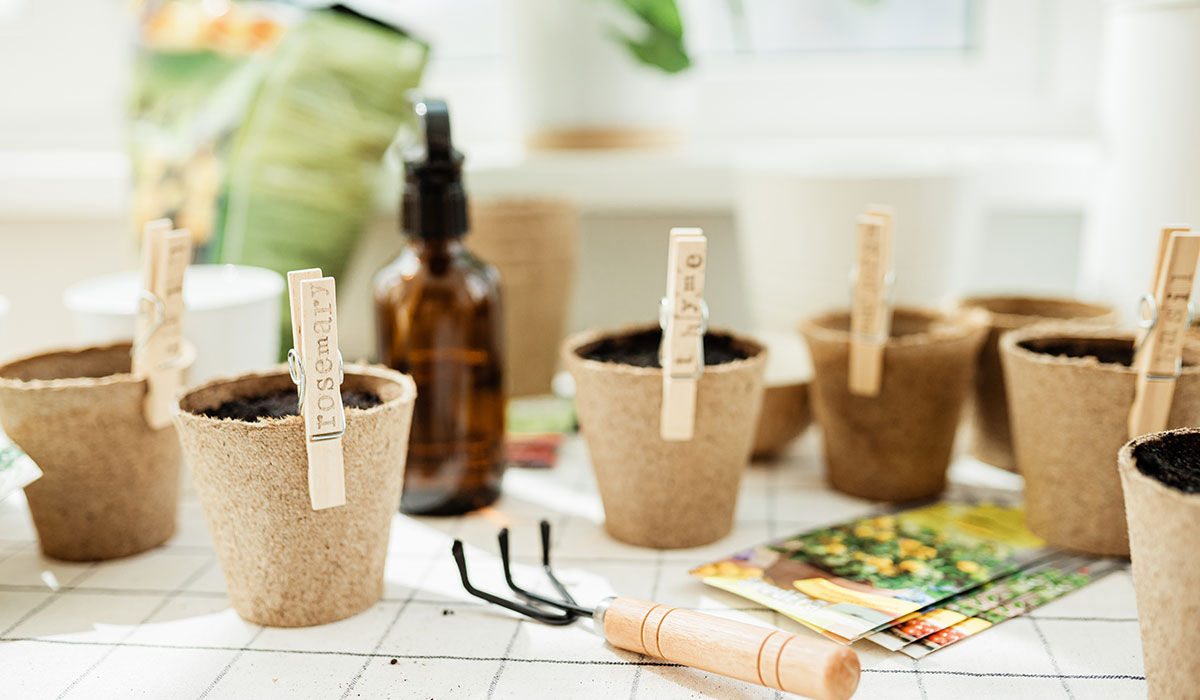How can you tell if your succulents are getting enough light? What is the preferred “amount” of light for succulents? How can you fix etiolated (not etoliated!) plants? What the heck are etiolated succulents anyway? Read on to find the answer to all these burning questions (no pun intended!)
What Does it Look Like If Your Succulent Isn’t Getting Enough Light?
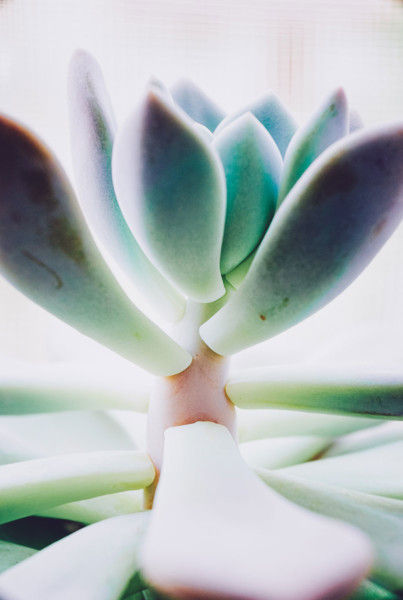
An example of an etiolated succulent
When succulents do not get enough light, they develop several noticeable characteristics. First, they are paler than normal. Second, they look “leggy.” In other words, they have longer stems, and the leaves grow further apart. As a result, instead of seeing a beautiful bunching together of leaves, you see a lot of the spindly stem. Your succulent ends up looking a lot more like the Charlie Brown tree than a full-bodied pine. The term for this condition is called etiolation.
The reason an etiolated plant looks the way it does is because plants crave light. So, if a succulent isn’t getting enough light, it will extend its stem, leading to that “stretched out” look. The plant becomes paler because it does not have enough chlorophyll. You may remember chlorophyll from those science classes in school. It is the pigment that plants use to convert sunlight into energy, and it is what gives plants their typical deeper green coloring.
Your rosette succulent looks a little bit different if it doesn’t get enough light. If your rosette succulent becomes etiolated, you can tell because it will lose its beautiful rosette. Don’t fret too much! By giving it more light, you can grow a new rosette at its top.
The Right Amount of Light
We suggest having your succulents in bright, indirect light. Depending on your location, you may not get enough sunlight for your succulents; in other places, you can have so much sun that your succulents burn! It’s a balancing act to make sure that your plant is getting the correct amount of light.
Can You Stop Etiolated Succulents from Happening?
Providing bright light from the moment you get your plants can stop your plants from getting too leggy. However, if you have your succulent for a long time, it will keep growing taller and taller or longer and longer…so you may have to behead your plant anyway!
How to Fix Etiolated Succulents
If you notice that your succulent has been getting too tall with large gaps in between the leaf growth, you can fix it! You can’t fix the parts that have already grown, but you can fix this lighting problem for any new growth on your plant.
If you live in a place where you can have the plant in full sun outside, then the fix is generally easy: just put your plants outside! To make sure you don’t shock the plant from too much sun too fast, you can place it in a slightly shaded area, and move it closer to full sun exposure every few days. Make sure that your plant’s container has proper drainage so any rain can drain out appropriately.
What if you live in a colder region and it’s winter? If you love your plant, it may be time to invest in a grow light. A grow light provides close light exposure for plants, and can be a great way for gardeners who get frosts and freezes outside to be able to grow tropical plants, succulents, and cacti throughout the year. A grow light can also be used year-round if you don’t have enough sun exposure in your growing location.
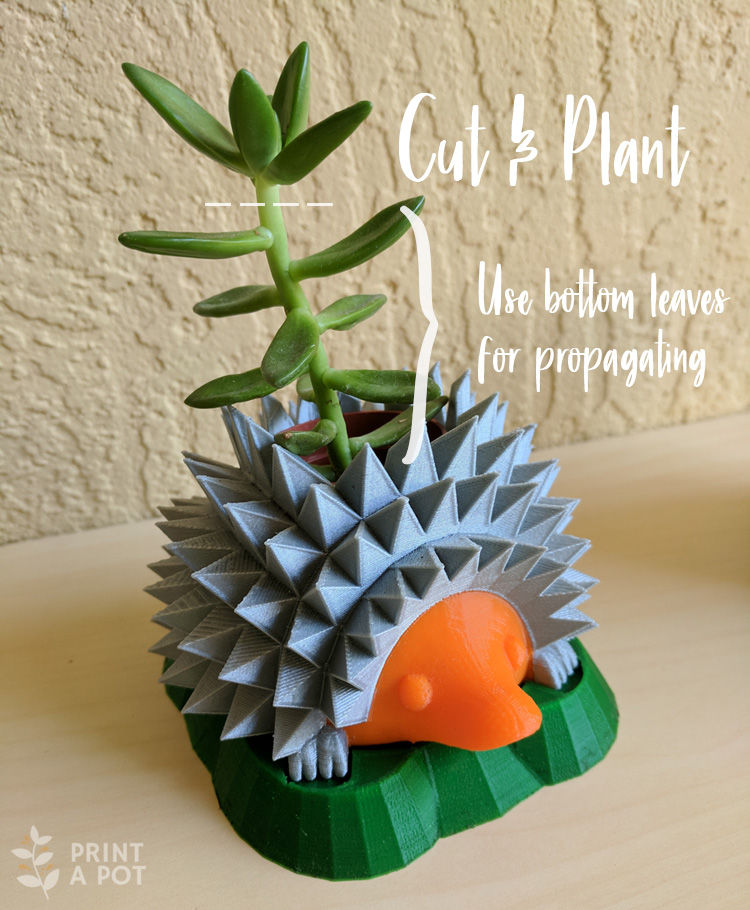 Providing your plant with more sunlight should let the plant grow without stretching to reach more sun. After some time, your succulent will have “normal”-looking growth, such as a rosette for echeverias and compact bunches of leaves for other succulents.
Providing your plant with more sunlight should let the plant grow without stretching to reach more sun. After some time, your succulent will have “normal”-looking growth, such as a rosette for echeverias and compact bunches of leaves for other succulents.
If you want to get rid of the evidence (the section of your plant’s etiolated phase), you can snip the “normal” top of your succulent with some plant snips and replant it as a cutting. To replant as a cutting, you can lay it somewhere dry to let the cut end callous over first or plant directly into soil without letting it have water for at least a week.
What can you do with the rest of the plant? You can gently separate the leaves from the stem and propagate them into new plants! You can also let the stem hang around to grow more mini plants from where the leaves were!
In the video below, I show you some of my stretching plants. They used to be so cute and lovely! Bright morning sun was not enough for these guys, so I repotted them into pots with drainage and placed them on a sunny patio. Then I show you some plants that were previously etiolated! With bright all-day sun, these plants have bounced back and there’s even a surprise baby!
Check out our DIY Light Box project!
Some of the links in this blog post are affiliate links. Purchasing anything from affiliate links costs nothing extra to you, but helps to support us. Thank you!

